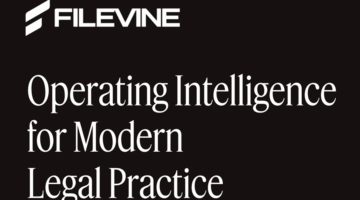 “This album is dedicated to all the teachers that told me I’d never amount to nothing.” – Notorious B.I.G.
“This album is dedicated to all the teachers that told me I’d never amount to nothing.” – Notorious B.I.G.
This week, in a revealing interview, Ruth Bader Ginsburg told the New York Times, “I don’t expect that we’re going to see another affirmative action case, at least in education.” For other reasons why Notorious R.B.G.’s interview was so unexpected, click here, here, and here. It was only last month, to many people’s surprise, that the Supreme Court upheld the affirmative action program at the University of Texas.
It was the second time opponents of affirmative action were able to bring the same case against UT before SCOTUS. Do you think the Court ruled correctly on the issue? How do you think the Court’s ruling will affect diversity in the legal profession?

Pursuing The Pro Bono Story: A Conversation With Alicia Aiken
This Pro Bono Week, get inspired to give back with PLI’s Pursuing Justice: The Pro Bono Files, a one-of-a-kind podcast hosted by Alicia Aiken.
In 2001, in University of Michigan’s appeal of Grutter v. Bollinger, some of the largest companies in the world — including, GM, Steelcase, 3M, Abbott Labs, Ashland, Bank One, Boeing, Coca-Cola, Dow, Dupont, Eli Lilly, Ernst & Young, Exelon, General Dynamics, General Mills, Intel, Johnson & Johnson, Kellogg, KPMG, Lucent, Microsoft, Nationwide, Pfizer, Proctor & Gamble, Sara Lee, Texaco, TRW, and United Airlines — filed amicus briefs in support of the university. Suffice it to say, affirmative action policies have a stunning array of support from every influential industry.
General Motors first supported the University in a brief filed in July 2000; Steelcase organized a second brief in October 2000 on behalf of 20 corporations, and 12 additional companies joined, according to the New York Times. The companies wrote, “‘Today’s global marketplace and the increasing diversity in the American population demand the cross-cultural experience and understanding’ gained from an educational environment where they are exposed to diverse ideas, perspectives and interactions.”
As noted by the Times, the companies say individuals who have been educated in a diverse setting are more likely to succeed for several reasons:
- They are better able to facilitate unique and creative approaches to problem-solving arising from the integration of different perspectives.
- They can better develop products and services that appeal to a wide variety of consumers and to market offerings in ways that appeal to those consumers.
- They are more likely to contribute to a positive work environment, decreasing incidents of discrimination and stereotyping.
- A racially diverse group of managers is better able to work with business partners, employees and clientele in the United States and around the world.

How Filevine Helps In-House Legal Teams Manage Every Matter With Confidence
AI powers tools for data intake, document management, and drafting contracts.
An amici brief was also filed on behalf of former high-ranking officers and civilian leaders of the Army, Navy, Air Force, and Marine Corps, including former military-academy superintendents, Secretaries of Defense, and present and former members of the U.S. Senate. As stated in their brief:
The crisis that mandated aggressive integration of the officer corps in the service academies and in ROTC programs is a microcosm of what exists in our society at large, albeit with potentially more severe consequences to our nation’s welfare. Broad access to the education that leads to leadership roles is essential to public confidence in the fairness and integrity of public institutions, and their ability to perform their vital functions and missions.
The fact remains: Today, there is no race-neutral alternative that will fulfill the military’s, and thus the nation’s, compelling national security need for a cohesive military led by a diverse officer corps of the highest quality to serve and protect the country.
For other examples of the need for diversity, just look at the problems in our school districts, public schools, police forces, and neighborhoods. Or simply read today’s newspaper headlines.
In 2003, SCOTUS ruled in Grutter that University of Michigan Law School’s affirmative action program was constitutional, but in its companion case (Gratz v. Bollinger) the Court ruled that the University’s undergraduate affirmative action program was not “narrowly tailored” to achieve the university’s diversity goals. In Grutter, Justice Sandra Day O’Connor stated, “We expect that 25 years from now, the use of racial preferences will no longer be necessary to further the interest approved today.”
While it may be true that affirmative action policies may no longer be needed or warranted in 2028, I don’t believe that any of the reasons and benefits for affirmative action programs that GM, Steelcase, former high-ranking officers and civilian leaders of the Army, Navy, Air Force, and Marine Corps, and present and former members of the U.S. Senate listed in their briefs have gone away in today’s environment. I have a feeling Justice O’Connor herself is disappointed in our progress as well.
In fact, it would be hard to argue that race relations have improved since 2003 or that America’s schools have become any more diverse. As I have previously mentioned, the majority of our country’s public-school students are now in poverty or close to it. It seems, now more than ever, that affirmative action policies are necessary to improve all types of diversity in our higher education programs. Why should we allow a university’s preferential treatment for legacies, but limit its discretion for improving its student body?
I believe the legal profession, like all these other industries, stands to benefit considerably from continued affirmative action policies in higher education. Admittedly, these programs can only do so much. In fact, one could argue that they have only marginally, if at all, improved diversity in our profession thus far.
Affirmative action policies are but one factor in ultimately influencing a more diverse profession. They are not, and never have been, the great leveler of an uneven playing field. Affirmative action programs are necessary in our colleges and universities because diversity in our public education system has made a long retreat from its great progress and now faces an uncertain future.
As I have previously noted, affirmative action programs only currently exist because Justices O’Connor, Stevens, Souter, Ginsburg, and Breyer narrowly won the day (5-4) in 2003’s Grutter. Now, with the highest court’s most recent ruling, affirmative action lives to see another day.
Regardless of your views regarding affirmative action, it is important to understand the logic behind such proposals. Whether you deem a policy impossible to implement or believe our system should be “colorblind,” it is important to understand the history of such policies and the legacies of our system. For some, it is race-consciousness that is racism. For others, racism is reality and history.
I hope this is the year that we as peers and colleagues – law professors, law students, and lawyers – can genuinely discuss and civilly debate the merits of these types of policies in our education system and society as a whole. If we don’t continue to raise these issues, who will?
Renwei Chung is the Diversity Columnist at Above the Law. You can contact Renwei by email at [email protected], follow him on Twitter (@renweichung), or connect with him on LinkedIn.